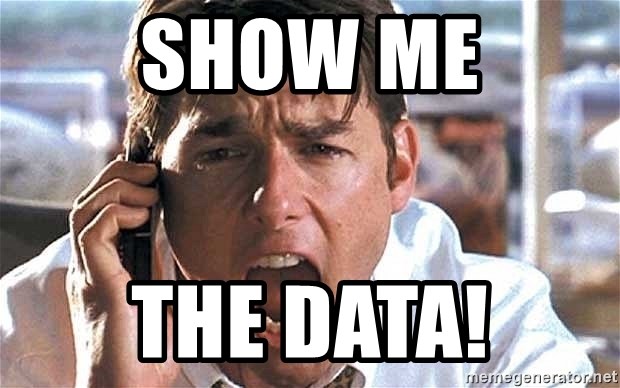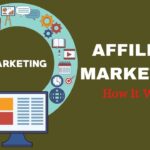
In 2022 Google made a very significant move in its campaign mix. They replaced Google Shopping (and Smart Shopping) with the new (since November 2021) shining Performance Max campaign type.
The Good
It is designed to be the go to solution for most digital marketing needs: Product sales, Leads and Services.
It sounds like a lot of things in one, but that is the philosophy which Google follows with this “innovation”. Even though it may look like I am making fun out of the novelty which P.max offers, the truth is digital marketing sees so little actual innovation and real meaningful change that I was personally delighted to see them try a new big bold campaign type. This is despite the public perception that this segment is part of the real IT sector innovation in our world (most other sectors IMO are in a real stagnation for the most of the last 50 years). The best thing is it worked out, P.max gives marketers like me the option to shoot several rabbits with one bullet and achieve results which were almost impossible with a Search/Shopping campaign.
The science behind that performance is the way Google ads trains: data, lots of data!

The more, the better is not something which I believe is always true, but to Google ads it is. Give that platform customer data of any type (legally please) and it will find for you as many similar people as possible in the right time when they consider buying a similar product/service like the one you are selling. This is of course the case when you know what you are doing, meaning you can set up and target that campaign with the right ads and budget.
The structure of the Performance campaign is the following:
Listing groups: a “product group” type of entity with lists of products from the old Shopping campaigns .
Google defines them the following way:
“Listing groups are made up of listings, which currently includes both products and collections (groups of products, assets, and rich retail data that represent a category landing page on your website).”
Performance max inherited these product lists from Google Smart Shopping.
Asset groups: Google allow you to attach Listing groups and through them – specific products which can be targeted with the help of Asset groups. They contain your text, banners, video and data: website data, CMS data, partner data. All this data is called Audience signals.
Audience signal/s: It informs the algorithm who your ideal customer group is. The audience signal consists of:
Custom segments and Your data + Interest & Detailed demographics.
Custom segments allows you to target people who browse similar websites to the ones of your competitors (when you specify them) by telling Google to include people with the following interests or behaviors.
Your data allows you to use Customer lists (CMS data etc.) and Website visitors (Universal / GA4 analytics or other tracking platform’s data) to further teach the algorithm who the people you want to reach with your ads are. People who converted the last X amount of time, people who subscribed to an email list, visited the website/certain page and any other customer data you can use fall under this category. My advice is to give Google your best data. Google can show ads to people outside of those two data point groups when the system decides such a person is likely to convert.
The third option is Interests & detailed demographics, it allows you to target the more standard In-market, Affinity, Live events and Detailed demographics audiences which is nothing new under the sun. Still it can be useful but my advice is to focus on Custom segments and using your own customer data.
The Bad
The information from Google about a mandatory migration from Smart Shopping to P.max in 2022 was very reassuring and pleasing to most marketers and business owners. The brutal truth is most accounts which migrated from Shopping to P.max had a learning period which even Google couldn’t tell anybody how long it was supposed to be.
All this translated in 2022 to lower revenues compared to 2021 when managers used Shopping and Smart Shopping. As I noted the performance of P.max for most businesses compared to S. Shopping already show better results but this migration could have been managed from Google by giving account managers around the advice to push Search campaigns in the best way possible or just lower expectations for a certain timeframe if there is not way around that decrease in performance. The great news is that overall so far the good far outweighs the bad. Before closing this article I have to write about the ugly.
The Ugly
It is as if the managers from Google ads decided that all those data points which marketers love and use everyday don’t matter anymore. Maybe lockdowns had some mental effect or some capable people resigned but to me making the biggest change in terms of campaign types on G ads and not allowing marketers to analyze the performance of their ad assets and what keywords triggered ads on Google search looks crazy to me in 2023. Well this is exactly what those managers decided, we still don’t have anywhere close to the amount of data we have with Search/Shopping campaigns.
Good news
In recent days I heard from several Google representatives that the company plans to enroll a few new data points which are missing. My hope is those points will be what is really missed, not some beta test most people can’t use. Hope is not something to rely on but gossip from Google ads representatives is good enough for me to see a near future in which every marketer will be able to explain to their clients what actually works and what does not in their Performance max campaigns.
Summary
2022 was the first year since the beginning of the pandemic during which we felt the negative economic effects of money printing. This affected the purchasing power of people and Google was quick to recognize they can lose a lot of their customers (You and other advertisers) due to that effect if they don’t improve their advertising suite with a better campaign type. The rollout of that was not spotless but the results I see with clients in many industries are better than Search and Smart Shopping.


